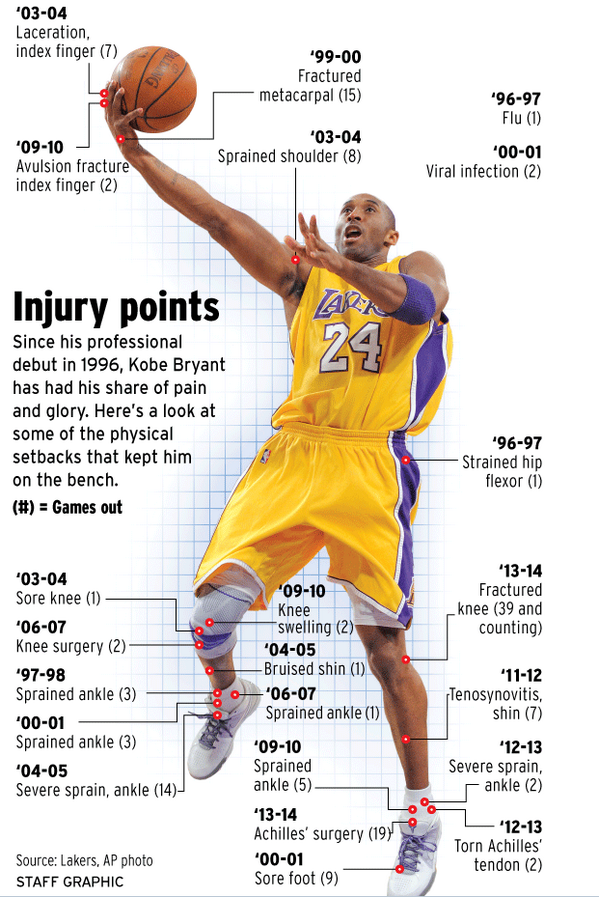LukaTheGOAT wrote:lessthanjake wrote:f4p wrote:3 sub-23 PER's in the playoffs in his 2016-2019 prime? in 3 years where he averaged 28 PER in the regular season? for an offensive player for whom scoring is a big part of what he does? that's really low by historical standards of the guys we are looking at, especially when steph was getting mentioned for the top 10.
I may have missed it at some point, so this is a genuine question, but have you ever responded to my point that teams clearly gameplan in crazier ways for Steph in the playoffs? We absolutely see cartoonish defensive schemes against him in the playoffs (as well as offensive schemes laser focused on hunting Steph in order to make him tired, in the hopes that that’ll limit his offense) that are more uncommon than in the regular season. If teams focus more on limiting you, then we’d expect it to work to at least some degree in terms of lowering your box-score numbers. But that gameplanning has consequences. For example, all those traps well behind the three-point line create lots of 4-on-3 situations for the Warriors. Trying to hunt Steph in order to make him tired has the obvious effect of leaving the rest of the team less tired. I could go on. This is why the relevant question is whether his *impact* is still great, not simply what happened to his box score numbers. And all available evidence indicates that his playoff impact is massive.
i agree, they were amazing. but i think AEnigma has posted draymond green impact stats that would indicate that some of the very things that make steph look so amazing also make draymond look arguably even better. he beats steph in on court plus/minus in the playoffs for several (all?) of their title runs, wins on/off quite a few years, is dominant, even league-leading, in some of those playoff impact metrics that say steph is great. if we are to believe these numbers, then we seemingly have to believe this was very much a two man show, and that's where we get back to the synergy, where it's hard to say if they are just so helpful to each other that we'll never know their true independent impact.
Playoff impact stats are of course noisy due to the low number of minutes played (and an even lower number of “off” minutes). And, importantly, comparing the “impact” of two players *on the same team* in a given playoff basically involves *even tinier* sample sizes, since the comparison will be primarily driven by on-off differences between the two, but the sample size of minutes they’ve played without each other in a given playoff is even smaller. For instance, 2014-2015 is one of two playoffs where Draymond’s AuPM/g is actually higher than Steph’s. But, given that Steph was higher in the box-score component of the AuPM/g formula (i.e. Backpicks BPM), him being ranked lower than Draymond is clearly on the back of the Warriors doing better in minutes with Draymond on and Steph off than they did in minutes with Steph on and Draymond off. But there were only 93 minutes with Draymond on and Steph off and 135 minutes with Steph on and Draymond off! So we’re really just talking about noise. And, with Steph finishing above Draymond in AuPM/g in 6 out of their 8 playoff runs—including all the other title runs—and by quite a lot on multiple occasions, Steph would seem ahead in a playoff sample size that’s at least a little larger. For reference on this sort of thing, by the way, in the 6 years the Spurs went to the finals, Duncan only had the highest playoff AuPM/g on the team twice (2003 and 2007), and a teammate of his was 1st on two occasions (1999 and 2005).
And, of course, ultimately we can actually get a very good indication of “their true independent impact” by stepping back and looking at an actually considerable sample size. When we do that, we see that, in the last decade in RS+Playoff games that both players played, the Warriors’ net rating with Steph on and Draymond off was 4.92 better than it was with Draymond on and Steph off. And that goes up to 6.03 if you count all games, rather than just all games both players played. While Draymond is definitely a very impactful player, Steph is clearly the more impactful player. And the arguments otherwise basically must involve muddying the waters with stuff that is based on tiny sample sizes.
okay, i've now tried to address some of these things. and one thing i've always objected to is the "steph plays way worse, the impact numbers say he was still great" thing that seems to happen with him. where his impact is somehow performance-independent and he gets a bunch of credit when basically everything else, including the warriors losing/being pushed to the brink, would say he faltered. yes, he does lots of things that aren't in the box score, but he does those things when he plays well. they aren't just offsetting thing where he ramps them up when he is faltering by traditional metrics. it can't just be:
steph put up 33/8/7 on 65 TS%
impact metrics: he's amazing!
steph put up 28/6/6 on 62 TS%
impact metrics: he's amazing!
steph put up 24/4/4 on 58 TS%
impact metrics: he's amazing!
steph played so badly his fans said he was injured because even they think he played poorly:
impact metrics: he's amazing!
now, there are probably some dips in there for some of those, but not enough to my eye.
This seems to be your main objection to looking at Steph’s great playoff impact profile. You seem to be arguing that impact stats must be wrong about Steph because he doesn’t really dip when he doesn’t do as well. But we’ve been over that this is just objectively not true. I previously pointed out that, when his shooting dipped in the 2021-2022 regular season, it absolutely did affect his impact—with his offensive impact being rated easily the lowest of his prime that season by various metrics (this difference was muted at least somewhat overall, since that was also his best season defensively). And when his playoff performance dipped in 2015-2016, we find that he had his clearly worst playoffs in terms of impact metrics (for instance, his league ranking of 9th in playoff AuPM/g in those playoffs was easily his worst in the last decade). There’s really not any valid argument that impact metrics fail to catch when Steph doesn’t play as well, so this is very clearly not a reason to discount Steph’s incredible output in the playoffs in impact metrics.
And, leaving aside that implication, your argument really just seems come down to you saying that playoff impact metrics about Steph are not to be trusted because you think they rate Steph too highly “to [your] eye.” But that’s really not much of an argument, especially when it comes from someone who freely admits he’s a Steph Curry “hater.”
See, but the plus-minus data we do have for the first few years of the Warriors run, has Draymond's plus-minus looking better
From 2015-2020, Draymond Green is 2nd in the NBA in Playoffs PIPM
https://www.reddit.com/r/nba/comments/j9xodj/from_20152020_playoffs_the_highest_rated_players/
This is significant because PIPM is too box-score dependent, yet someone like Draymond comes out looking so good in the metric, despite so much of what he does not showing up in the box-score.
It is not just PIPM of box-hybrid models that that are high on Draymond. From 2014-2019, Draymond lead the NBA in PS RAPTOR WAR.
From 15-17, Draymond is 2nd in PS AuPM/G.
Draymond is #1 in 14-16 and 15-17 PS LEBRON, even ahead of Steph.
https://www.bball-index.com/my-playoff-lebron/
As a matter of fact, RAPTOR projections considered Draymond to be the NBA player who improved most from the RS to PS in the NBA during that time frame at a whopping 1.4 points per 100 possessions. The next most improved player was Lebron who was at 0.9 pts per 100 possessions. https://fivethirtyeight.com/features/how-our-raptor-metric-works/
According to the olfer version of AuPM/G, which has data going back to 96-97, no player has improved more in from the RS to PS in their career than Draymond Green (up to at least the 2020 PS). As mentioned in the article, "among players with at least five qualifying runs, Green has the largest improvement in AuPM history. And this isn’t from slow-rolling the regular season either. In the seven seasons he’s played in the postseason, Green’s posted a hefty +3.5 AuPM per game in the regular season and then a whopping +4.7 in the playoffs. That’s like going from the sixth-best player in the league to the second." https://backpicks.com/page/6/
Kevin Pelton also wrote an article about how Draymond was statistically the 2nd biggest playoff riser during some specific time period, but I cannot find it
If you want numbers that look at the pure plus-minus side of things (and does not include anything pertaining to the box-score), I should note, Draymond looks arguably better...
Draymond is #1 in 14-18 PS RAPM, and #1 in 15-19 PS RAPM. He is also #2 in @jalengreen Career PS RAPM that goes from 1997-2021
https://public.tableau.com/views/PostseasonRAPM1997-2021/PostseasonRAPM1997-2021?%3Aembed=y&%3AshowVizHome=no#2
If we know GSW's offense declines in the PS, but their defense makes one of the biggest improvements ever, and we know that Draymond has been the captain of those GSW defenses, and all the data we have suggests he is among the biggest improvers in performance come PS time, I will say I think Draymond sticks out more in terms so plus-minus.
Steph is the battle player, but I might argue Draymond covers up more wholes than people realize. The Warriors can afford to decline offensively because of what Draymond is able to level up to.
Draymond…

















